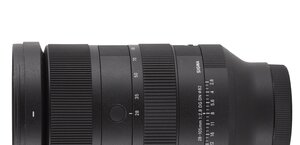Sigma C 24 mm f/2 DG DN
5. Chromatic and spherical aberration
Chromatic aberration
It seems using as many as three low dispersion glass elements in the construction of the lens paid off. The Sigma doesn't have almost any problems with longitudinal chromatic aberration, it's enough to glance at photos, shown below, that we took by f/2.0 and f/2.8 to see that very clearly. |
What about the correction of lateral chromatic aberration? A respective graph you can find below.

Please Support UsIf you enjoy our reviews and articles, and you want us to continue our work please, support our website by donating through PayPal. The funds are going to be used for paying our editorial team, renting servers, and equipping our testing studio; only that way we will be able to continue providing you interesting content for free. |
- - - - - - - - - - - - - - - - - - - - - - - - - - - - - - - - - - - - - - - - - - - - - - - -
The differences between both types of detectors are negligible and in both cases the aberration level is practically zero. It means it won't be bothersome in real life photos and you can only admire such an exemplary performance – a round of applause!
| A7R III, RAW, FF, f/2.0 | A7R III, RAW, FF, f/8.0 |

|

|
Spherical aberration
First photos of this chapter show that after stopping down the aperture by 1 EV there is a slight shift of depth of field toward greater distances. It means spherical aberration is not corrected in a perfect way. Also the appearance of out-of-focus circles of light, reached before and behind the focus, confirms that conjecture – the difference between them is noticeable as the circle reached behind the focus features a brighter rim.
| A7R III, f/2.0, before | A7R III, f/2.0, after |

|

|






